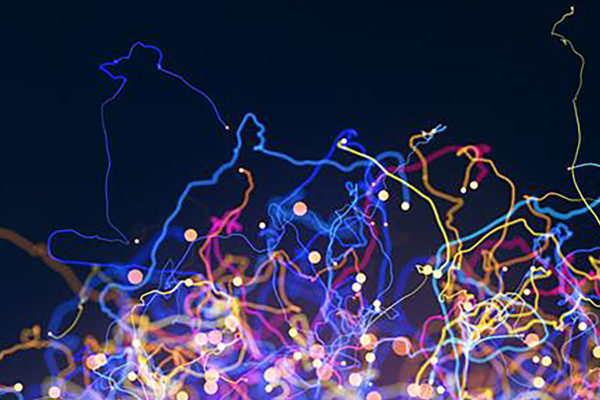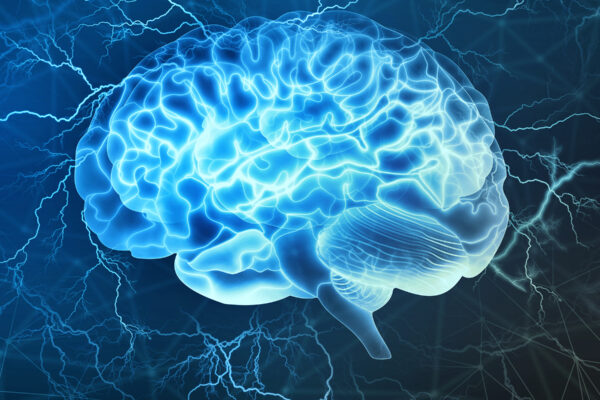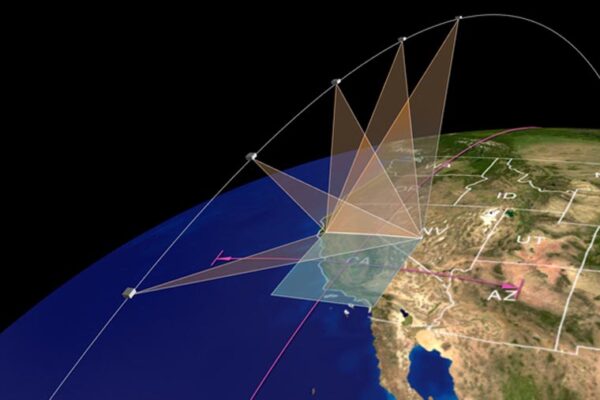If a poisonous gas were released in a bioterrorism attack, the ability to predict the path of its molecules — through turbulent winds, temperature changes and unstable buoyancies — could mean life or death. Understanding how a city will grow and change over a 20-year period could lead to more sustainable planning and affordable housing.
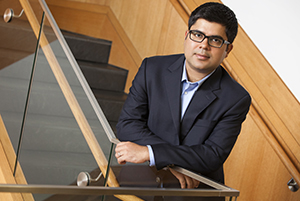
Deriving equations to solve such problems — adding up all of the relevant forces — is, at best, difficult to the point of near-impossibility and, at worst, actually impossible. But machine learning can help.
Using the motion of aerosol particles through a system in flux, researchers from the McKelvey School of Engineering at Washington University in St. Louis have devised a new model, based on a deep learning method, that can help researchers predict the behavior of chaotic systems, whether those systems are in the lab, in the pasture or anywhere else.
“That is the beauty of aerosols,” said Rajan Chakrabarty, assistant professor of energy, environmental and chemical engineering. “It’s beyond one discipline, it’s just fundamental particles floating in air and you just observe the chaos.”
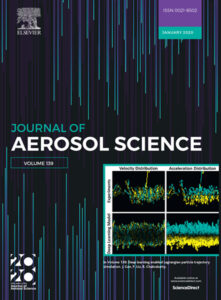
The research was published as a cover article in the Journal of Aerosol Science.
Chakrabarty and his team — postdoctoral researcher Pai Liu and Jingwei Gan, then a PhD candidate at the Illinois Institute of Technology — tested two deep learning methods and determined that the generative adversarial network produced the most accurate outcomes. This kind of AI is first fed information about a real-world process, then, based on that data, it creates a simulation of that process.
Motivated by game theory, a generative adversarial network receives both the ground truth (real) and randomly generated data (fake) and tries to determine which is real and which is fake.
This process repeats many times, providing feedback, and the system as a whole gets continually better at generating data matching that on which it was trained.
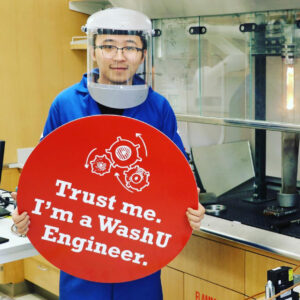
It is computationally expensive to describe the chaotic motion of an aerosol particle through a turbulent system, so Chakrabarty and his team needed real data — a real example — to train its system. This is where aerosols came in.
The team used the buoyancy-opposed flame in the Chakrabarty lab to create examples on which the AI could be trained. “In this case, we experimentally added chaos to a system by introducing buoyancy and temperature differences,” Chakrabarty said. Then, they turned on a high-speed camera and recorded 3-D trajectory datasets for soot particles as they meandered through, zipped around and shot across the flame.
They trained two kinds of artificial intelligence models with the data from the fire chamber: the variational autoencoder method and a generative adversarial network (GAN). Each model then produced its own simulation. Only the GAN’s trajectories mirrored the statistical traits found in the experiments, producing true-to-life simulations of chaotic aerosol particles.
The real-time trajectory of a particle next to the simulated trajectory produced by the GAN
Chakrabarty’s deep learning model can do more than simulate where soot, or chemicals, will wind up once released into the atmosphere. “You see many examples of this kind of chaos, from foraging animals, to the transport of atmospheric pollutants and biothreats, to search and rescue strategies,” he said.
In fact, the lab is now working with a psychiatrist looking at the efficacy of treatment in children with tic syndrome. “Tics are chaotic,” Chakrabarty explained, so the typical clinical trial setup may not be effective in determining a medication’s efficacy.
The wide application of this new deep learning model speaks not only to the power of artificial intelligence, but also may say something more salient about reality.
“Chaos, or order, depends on the eye of the beholder,” he said. “What this tells you is that there are certain laws that govern everything around us. But they’re hidden.
“You just have to uncover them.”

